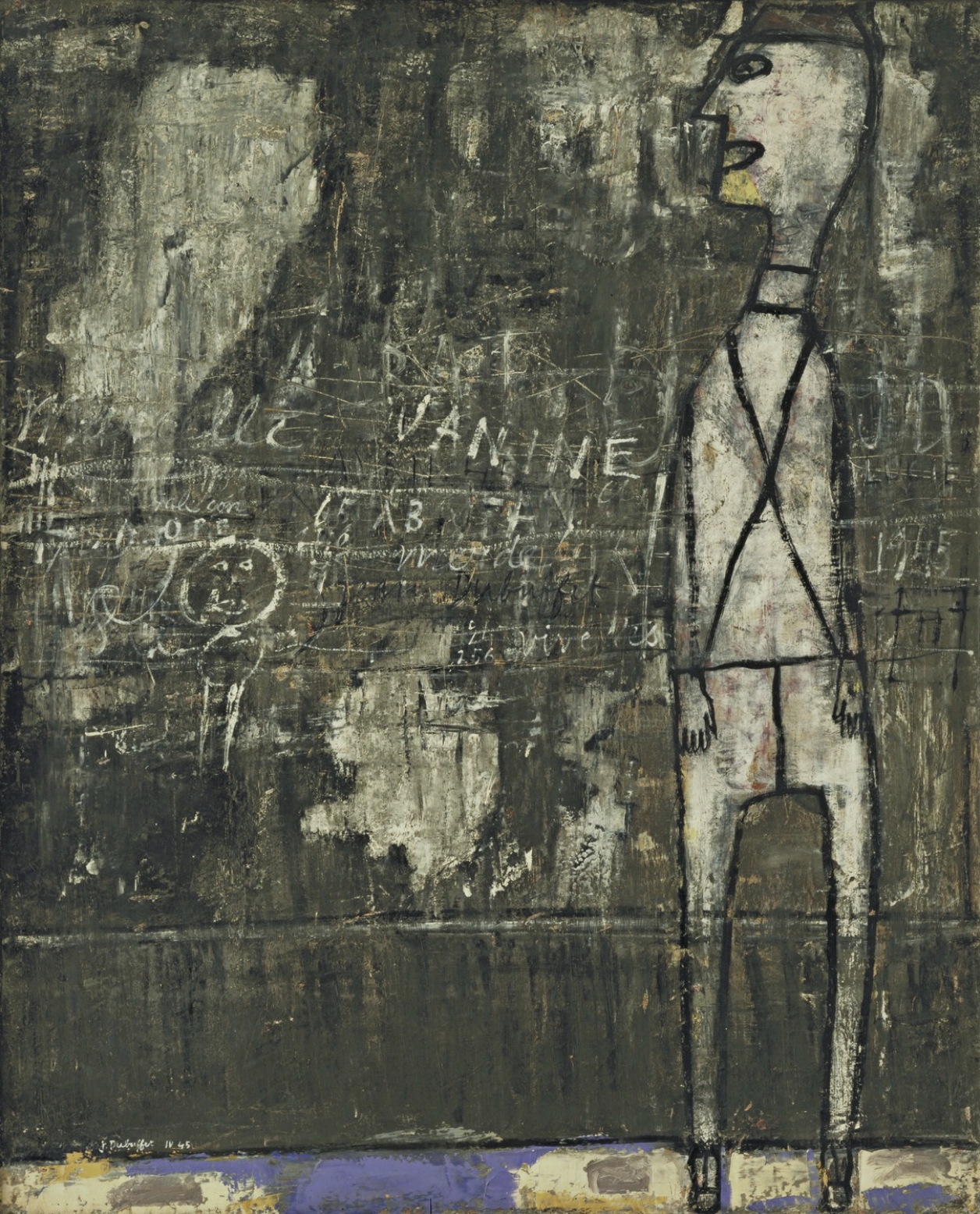Eileen Agar: ‘Surround Yourself with Sensitive Chaos’
‘To play is to yield oneself to a kind of magic, and to give a lie to the inconvenient world of fact.’
Eileen Agar
I recently visited an excellent retrospective of the work of Eileen Agar. (The Whitechapel Gallery, London until 29 August)
Agar rebelled against her aristocratic upbringing to pursue her own artistic path. She developed a unique style of painting that synthesised Cubism and Surrealism. Inspired by nature, she created exuberant colourful collages that revealed psychological truths. She restlessly explored new media and fresh forms of expression. She was gregarious, fun loving and playful, and she channelled her rich enthusiasms into her work.
Let us consider what we can learn from this creative pioneer.
1. Live Your Life ‘in Revolt Against Convention’
Eileen Agar was born in Buenos Aires in 1899. Her American mother was the heir to a biscuit company, her Scottish father an industrialist. She grew up in Argentina in a privileged world ‘full of balloons, hoops and St. Bernard dogs.’ She had a pony named Strawberry Cream. And when, every two years or so, the family sailed to Britain, her mother insisted on embarking with a cow for milk and an orchestra for entertainment.
Agar attended boarding school in England and finishing school in Paris. Having walked out on her first art college because it was too academic, she studied at Brook Green and then the Slade in London. Gradually a rift developed between Agar and her parents. She didn’t want to become a debutante. She refused to take the Rolls Royce that was sent to pick her up from college each day.
'I have spent my life in revolt against convention, trying to bring colour and light and a sense of the mysterious to daily existence.’
2. Embrace ‘Point and Counterpoint’
In 1929 Agar moved to Paris. There she studied under the Czech Cubist, František Foltýn, and fell in with the Surrealists, André Breton and Paul Éluard.
Agar’s painting had hitherto been figurative and representational. But from now on she combined the cold logic of Cubism with the sensuous irrationality of Surrealism.
‘The two movements interested me most. I see nothing incompatible in that, indeed we walk on two legs, and for me, one is abstract, the other Surreal – it is point and counterpoint.’
Agar painted muses and madonnas with sinuous lines, swirling shapes and vibrant hues. She depicted families and friends as bold abstractions. She distilled the turbulent forces of Winter into a mass of curves and colours. She created a woodcut of a bird that could also be seen as two lovers locked in an embrace. She represented her partner, an avid collector of precious stones, with a collage of jewels against a silhouette of his head and shoulders. Her work was relentlessly inventive.
Agar joined the English Surrealist Group and was the only British woman to take part in the famous 1936 International Surrealist Exhibition in London. This led to her being described thereafter as a Surrealist, a neat categorisation she would always reject.
‘The sudden attention took me by surprise. One day I was an artist exploring highly personal combinations of form and content, the next I was calmly informed I was a Surrealist.’
Eileen Agar - Surrealist Collage, 1938
3. Find Inspiration in Nature
Agar was always keen to escape city life. She took summer-holidays in Dorset and Cornwall, and wintered in Portofino and Tenerife. Once away she could immerse herself in the wonders of the natural world.
‘The earliest forms of Nature to a painter are studies in pure abstract design.’
Agar painted butterflies and birds; fish, insects and snakes. She made collages of squid and starfish; of elegant coral and fragile leaves. She created silhouettes of hands and faces and female forms, overlain with flowers and foliage, interwoven with classical imagery.
‘You see the shape of a tree, the way a pebble falls or is framed, and you are astounded to discover that dumb nature makes an effort to speak to you, to give you a sign, to warn you, to symbolise your innermost thoughts.’
There is a sense that for Agar the beach represented a threshold between the conscious and the unconscious worlds; that the forest was embedded with timeless truths; that the ocean spoke of interior lives.
Eileen Agar's collage on paper, Precious Stones (1936). Courtesy of Leeds Museums and Galleries. © The estate of Eileen Agar.
4.’Surround Yourself with Sensitive Chaos’
Agar collected shells, stones, bones and fossils from the seashore. She foraged for interesting flora and fauna in the woods. She took photographs of unusual rock formations. She would often integrate her latest discoveries into her collages, a form she liked because it enabled overlay and juxtaposition: ‘a displacement of the banal by the fertile intervention of coincidence.’
But Agar’s ‘found objects’ didn’t always make their way immediately and directly into her art. She also used her collection as ongoing stimulus; as creative problem solvers.
‘I surround myself with fantastic bric-a-brac in order to trigger my imagination. For it is a certain kind of sensitive chaos that is creative, and not sterile order.’
5. ‘Yield to the Magic of Play’
Agar was an avid socialite. She studied with Cecil Beaton and Henry Moore; holidayed with Leonora Carrington and Max Ernst; drank with Dylan Thomas and Ezra Pound; partied with Roland Penrose, Lee Miller and Paul Nash. She visited Pablo Picasso and Dora Maar's home in Mougins, Alpes-Maritimes and danced on the rooftops in a transparent dress.
Agar was serious about play. She regarded it as an aid to her creativity, a liberating spiritual force.
‘Life’s meaning is lost without the spirit of play. In play all that is lovely and soaring in the human spirit strives to find expression. In play the mind is prepared to enter a world where different rules apply, to be free.’
You see Agar’s merrymaking percolating through her work. She created her Angel of Anarchy from a plaster head covered in fabric, shells, beads, diamante stones and green osprey feathers. She made her Ceremonial Hat for Eating Bouillabaisse from an upturned cork basket stuck with bones, coral and crustaceans.
Eileen Agar, Untitled collage, 1936. Mixed media and collage on paper, 75.5 x 53.3 cm. Courtesy of Mayor Gallery. © Estate of Eileen Agar/Bridgeman Images
6. Recognise the Restorative Power of the Outdoors
Inevitably, with the onset of World War II Agar’s hedonism and optimism were diminished. She was a pacifist, and pitched in as a canteen assistant and a fire-watcher at night. She helped friends fleeing persecution and those made homeless by the Blitz. But she found it hard to create. And what art she did make was anxious and downbeat.
‘How does one communicate with any subtlety when the world is being deafened by explosions?’
After the war Agar gradually emerged from her melancholy through a diet of work, travel and spending time outdoors.
‘I had been too long cut off from the world of nature, too cooped up, too cribbed and confined, and the relief of finding one’s roots responding to the quickening pulse of vegetation, the vast mountainscapes, the sea horizons, all this made me fall in love with the mountainous dew-drop in the ocean and I revived and could work again.’
Eileen Agar, Angel of Anarchy 1936-40 © The Estate of Eileen Agar
Agar continued to paint, draw and make collages. In the 1950s she experimented with spontaneous art, pouring paint with free swirling actions to create loose, fluid imagery. In the 1960s she embraced the versatility of acrylic paints. Between 1946 and 1985 she had 16 solo exhibitions. And in 1986, aged 87, she modelled dresses for Issey Miyake.
Eileen Agar died in 1991, a month shy of her 92nd birthday. She had been creating for seventy years.
Agar had a restless mind; an insatiable appetite for new ideas and fresh perspectives. She resisted categorisation. She found beauty, inspiration and relief in the natural world. And she responded to it with work that spoke of freedom and boundless possibility.
'One must have a hunger for new colour, new shapes and new possibilities of discovery.'
'Come with me, my love
To the sea,
The sea of love.
I want to tell you
How much I love you.’
Cat Power, ’Sea of Love’ (P Baptiste / G Khoury)
No. 329
































